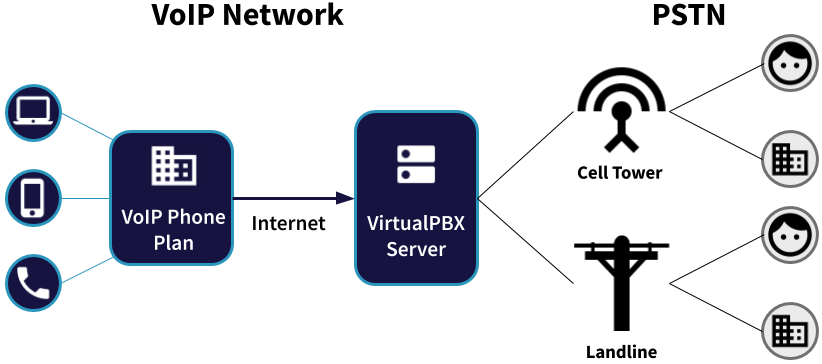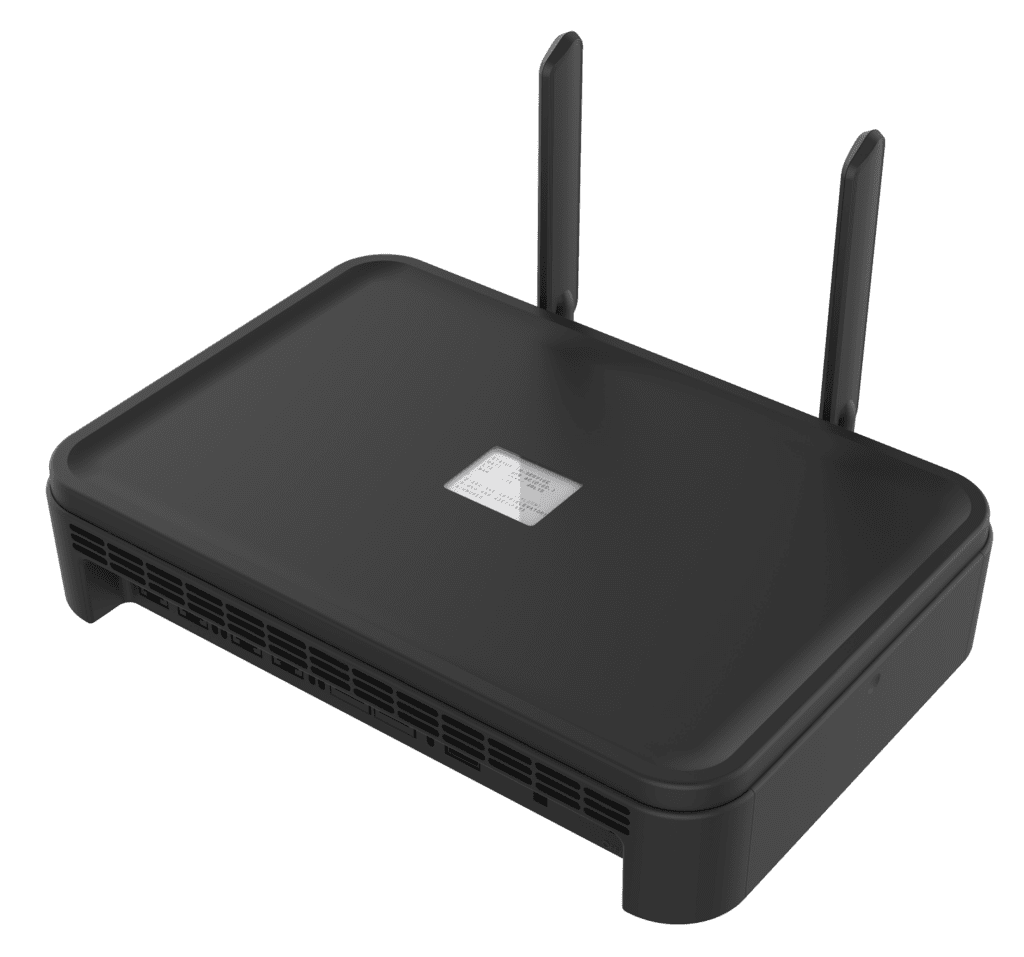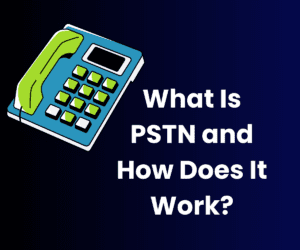In the era of rapidly advancing communication technologies, it’s crucial to understand the foundations upon which our modern systems are built. One such cornerstone is the Public Switched Telephone Network (PSTN), which has long served as the backbone of global telecommunications. Alongside PSTN, alternatives such as Airdial, a cost-effective POTS alternative for replacing traditional copper wire telephone service, have emerged, offering innovative solutions to traditional telephony challenges.
In this blog post, we’ll delve into what PSTN is, how it works, and discuss its superior counterparts in today’s digital landscape.

What is PSTN? How does it work?
The Public Switched Telephone Network (PSTN) refers to the traditional landline telephone system that connects households and businesses worldwide. It comprises a vast network of copper wires, fiber-optic cables, microwave transmission links, cellular networks, and satellites, managed by telecommunications companies.
PSTN operates on circuit-switched technology, where dedicated physical circuits are established between callers to facilitate communication. When a call is made, the PSTN routes it through various switches, exchanges, and carriers until it reaches the recipient’s phone line. This process involves analog signals being converted into digital signals and transmitted over the network.
Common Benefits of VoIP in Comparison to PSTN
Voice over Internet Protocol (VoIP) represents a revolutionary shift from the traditional PSTN model. Instead of relying on dedicated physical circuits, VoIP leverages the Internet to transmit voice data packets. Let’s explore the advantages of VoIP over PSTN:
Cost-effectiveness: VoIP typically offers lower calling rates, especially for long-distance and international calls, since it utilizes existing Internet infrastructure.
Flexibility and scalability: VoIP allows for easy scalability, enabling businesses to add or remove lines as needed without significant infrastructure changes. Additionally, VoIP systems often come with features like voicemail-to-email, call forwarding, and virtual phone numbers, enhancing flexibility.
Mobility: VoIP enables users to make and receive calls from anywhere with an internet connection, making it ideal for remote work and on-the-go communication.
Integration with other technologies: VoIP seamlessly integrates with various software applications, such as CRM systems and unified communications platforms, enhancing productivity and collaboration.
VoIP vs PSTN
Voice over Internet Protocol (VoIP) represents a revolutionary shift from the traditional PSTN model. Instead of relying on dedicated physical circuits, VoIP leverages the Internet to transmit voice data packets. Let’s examine the pros and cons of each:
VoIP
PROS
Cost-effectiveness: VoIP typically offers lower calling rates, especially for long-distance and international calls, since it utilizes existing Internet infrastructure.
Flexibility and scalability: VoIP allows for easy scalability, enabling businesses to add or remove lines as needed without significant infrastructure changes. Additionally, VoIP systems often come with features like voicemail-to-email, call forwarding, and virtual phone numbers, enhancing flexibility.
Mobility: VoIP enables users to make and receive calls from anywhere with an internet connection, making it ideal for remote work and on-the-go communication.
Integration with other technologies: VoIP seamlessly integrates with various software applications, such as CRM systems and unified communications platforms, enhancing productivity and collaboration.
Superior call routing: VoIP systems often offer advanced call routing features, allowing businesses to implement complex call handling rules based on factors like time of day, caller ID, and agent availability.
Extensive integrations: VoIP systems can integrate with a wide range of third-party applications and services, enabling businesses to streamline workflows and enhance productivity. Integrations may include customer relationship management (CRM) software, help desk systems, and team collaboration tools.
Analytics and reporting: VoIP platforms typically provide detailed analytics and reporting capabilities, allowing businesses to gain insights into call volumes, durations, and customer interactions. This data is used to optimize operations, improve customer service, and make informed business decisions.
Device compatibility: VoIP is accessed using a variety of devices, including desktop computers, laptops, smartphones, and dedicated VoIP phones. This flexibility enables users to choose the most convenient device for their communication needs.
CONS
Dependence on Internet connection: VoIP quality is affected by the stability and bandwidth of the Internet connection. Poor internet connectivity can lead to dropped calls, latency issues, and reduced call quality.
Reliability concerns: In the event of a power outage or Internet downtime, VoIP services may become unavailable, impacting communication continuity. However, VoIP devices (like apps, call forwarding) can connect via LTE giving redundancy that PSTN does not.
PSTN
PROS
Reliability: PSTN has a proven track record of reliability, with established infrastructure and redundancy measures in place.
Call quality: PSTN typically offers higher call quality and reliability compared to VoIP, as it operates on dedicated physical circuits.
Universal accessibility: PSTN services are widely available, making them accessible to users in remote or underserved areas.
CONS
Sunsetting: POTS lines are going away
Cost: PSTN services can be more expensive, especially for long-distance and international calls.
Limited features: PSTN lacks many features offered by VoIP, including handling call routing, text messaging, integrations, and more.
Meet AirDial: Revolutionizing PSTN
In addition to the traditional choices of VoIP and PSTN, businesses now have a third option. Airdial is a PSTN Replacement alternative that digitally upgrades POTS lines. Airdial is suited for businesses seeking cost savings while maintaining the functionality of alarm, safety, building access, and fax systems. By transitioning from outdated copper-based phone lines to Airdial’s intelligent all-in-one solution, businesses can enhance efficiency and reliability. Airdial seamlessly operates on a hassle-free wireless network, eliminating the need for cumbersome physical infrastructure and simplifying maintenance. We streamline and simplify the process, covering everything from assessment to installation and ongoing support. Experience the benefits of modern communication infrastructure with Airdial, ensuring a smooth and cost-effective transition for your essential systems. Schedule an Airdial Demo today!
In conclusion, while PSTN has been a stalwart in telecommunications, the advent of VoIP heralds a new era of communication. By embracing VoIP, businesses can unlock a myriad of benefits and stay ahead of the curve.








